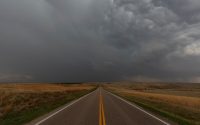Are New York City Buildings Ready for a Big Earthquake?
For New York City residents, the earthquake on Friday might have felt like just a few light shakes. But if an earthquake of greater magnitude were to strike much closer to the city, the risk of serious damage could be relatively high.
The five boroughs are home to more than 200,000 multifamily buildings made with un-reinforced brick and built from the mid-1800s to the 1930s, according to a city hazard plan. Many rowhouses across the city neighborhoods fall into this category.
Such masonry cannot bend or flex during an earthquake and would instead break or crumble. A strong earthquake could cause some buildings of this type to collapse.
Although earthquakes are not as common around New York City as they are in California, New York officials consider the risk they present to be high because of the city’s density and older building stock.
Most of the city’s buildings were built before 1995, when earthquake-safety provisions were added to the local building code.
An earthquake could lead to other kinds of damage, like flooding. To deal with that, city guidelines recommend that buildings in coastal areas have a base that lets water pass through, a first floor on piers, for example.
But because much of the city’s waterfront sits atop wetlands or wastelands that are somewhat unstable, an earthquake could damage a building’s foundation, making it “uninhabitable or unusable,” according to the hazard plan.
The worst earthquake to hit New York City occurred in 1884. Its estimated magnitude of 5.4 and its epicenter was between Brooklyn and Sandy Hook, N.J.
If an equivalent earthquake were to strike now, it could cause more than $4.7 billion in damage to buildings and other infrastructure, according to a city model.
Any earthquake could “compromise infrastructure such as bridges, tunnels, utility systems, dams, and highways” according to the city’s hazard plan, which acknowledges that the “seismic vulnerability of the city’s complex network of interlinked infrastructure remains poorly understood and exists as an area of high concern.”
The plan also notes that “some of New York City’s critical infrastructure systems are vulnerable because they have aged and have maintenance problems.”
James Oddo, the city’s buildings commissioners, said at a news conference on Friday that the department was concerned about “downstream possibilities” resulting from the earthquake on Friday that may emerge in the coming days or weeks, including cracks in buildings or problems with retaining walls.
“If you see something that is problematic, please call 311,” he said.


